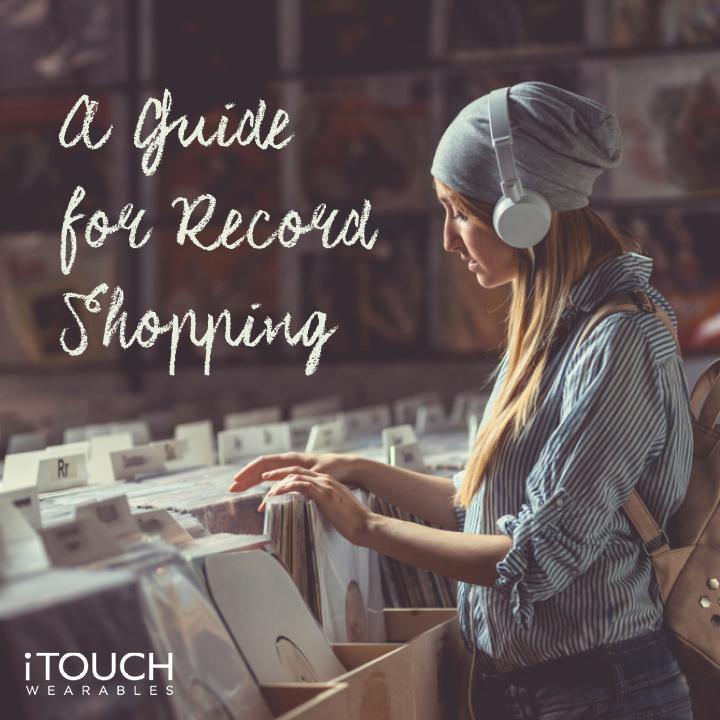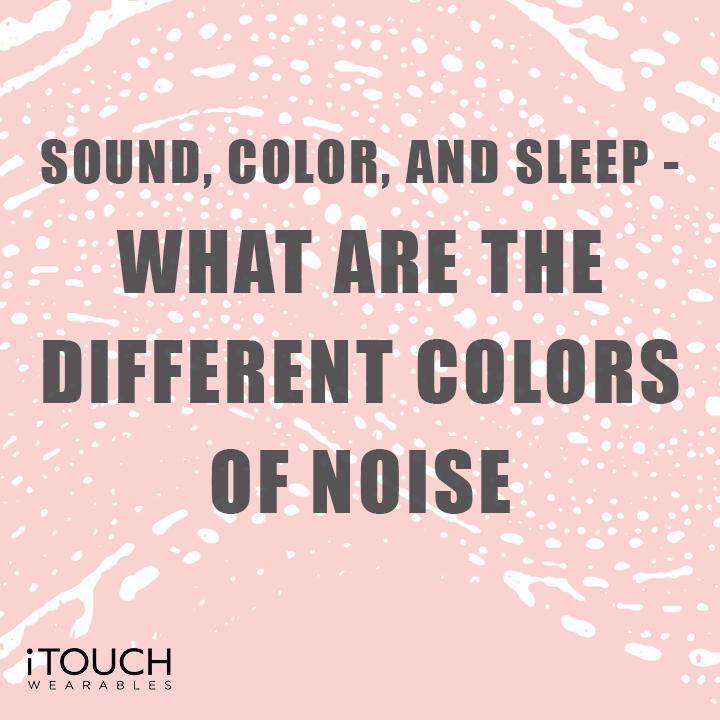
A Guide For Record Shopping
If there was one activity that I could spend hours and hours doing, it's going record shopping.
I cannot pinpoint precisely at what point in my life I became interested in vinyls, but it may have been instilled in me since birth. My grandfather had worked for Billboard Music for most of his life, as a director of sales. Within his career, he traveled all over the world, meeting thousands of musicians. One of my favorite photos of him features him with French recording artist Francoise Hardy, a true legend. With his love for his job and music, he collected an extensive record collection that, as a child, I marveled at the album artwork, curious of what lingered within each sleeve.
As I got older, his love of music continued to be instilled in me. Family gatherings became an oasis of personal concerts and long listening parties, having singalongs with all my extended family on my grandfather's back porch. I learned the words to every Carole King song and Dolly Parton melody in those long nights.
My grandfather passed away when I was young, but his legacy stayed within my heart and family. His albums and record player, however, got stored under a ping-pong table and collected dust, and since have been mostly destroyed by Hurricane Sandy. The one thing I regret the most is not being able to dig through the boxes beforehand, but my family and I were able to save a few, and my mother was able to get a few of her favorites before then.
By the time I was a teenager, I had started creating a record collection of my own. It started with perhaps one of my favorite albums ever, Stevie Nick's "Rock A Little," and has grown into a sizable amount of at least 500. The records collected from my grandfather - mostly that of show-tunes, the original cast recordings of Broadway shows, and some Barbra Streisand records - are ones that I still keep at the forefront of this collection, returning to them when the time feels right.
Now, at twenty-four, I have tried to instill my love of records into my friends and even my partner. Now and then, we will spend long hours sifting through local stores, or occasionally making a date to dive into personal collections. My boyfriend and I spent our first date listening to David Bowie records in his dorm room just talking (and yes, probably kissing - well yeah, a lot of kissing) the day away. But if you are curious about starting a collection of your own, or even simply how to begin shopping for a record, I got the perfect guide for you, based upon my own experience! Ready to dive in? Here is my own personal guide on how to go record shopping:
Step One - Learn The Terminology
One thing I wished I knew before I first started going record shopping is how much terminology is actually involved with it. The good news is, it isn't anything too complicated, and once you learn about them, you'll pick it up in no time! When it comes to records, there is a vast amount of information that can be involved with it, more so than one may have ever thought. For example, records can be played at different speeds, known as RPM's or "rotations per minute."
These RPM's include:
- 78 RPM - These were the official record standard of the early 1900s and gained mass popularity by 1925. These early records had many issues; not only were they limited in playback time (approximately 3 minutes per side) but were quite brittle and prone to shatter as they were made of a shellac material.
- 33 RPM - Were created shortly after 78 RPM records were produced and aimed to address the issues found within earlier records released during the period. Columbia Records began selling a 33 system back in 1945. They marketed these records and record players with the ability to playback entire classical music performances and symphonies without having to flip the disc over.
- 45 RPM - Were also released shortly after 78 RPM records were produced and are quite similar to 33 RPM records. In contrast, the records are slightly smaller than the other two and soon replaced 78 RPM records in the 1950s.
Nowadays, record companies focus primarily on releasing 33 RPM and 45 RPM records, as nearly all record manufactures by the 1950s focused on systems that could play both the 33 and the 45. 78 RPM record players are now often hard to come by, and many people find you need to get a special needle meant to play those records.
When it comes to records and their speeds, I mentioned that 45 RPM records are smaller than 33 RPM and 78 RPM records. This is quite common, and many records are produced in different sizes. These sizes, often measured in inches, are 7" records, 10" records, and 12" records.
- 7 Inch Records - Generally speaking, a 7 inch record can fit around 4-6 minutes per side at 45 RPM (the most common speed). These records are often made for singles, usually for promotions or special releases. An example of this would be Kate Bush's single, "Experiment IV," released on a 7" inch record back in 1986 for EMI Records.
- 10 Inch Records - On a 10 inch record you can fit around 9-12 minutes per side at 45 RPM or 12-15 minutes per side at 33 RPM.
- 12 Inch Records - A 12 inch record fits around 12-15 minutes per side at 45 RPM and 15-22 minutes per side at 33 RPM (the most common speed). A famous example of a 12" record would be Fleetwood Mac's, "Rumours," which sacrilegiously left off Stevie Nick's song, "Silver Springs," to fulfill the time requirement needed for the record.
Lastly, when it comes to records, there are a few other things to also keep in mind, such as the differences between an LP or a double album. These simply refer to the number of disks that come with a record. For example:
- A Standard LP - Usually contains one disc or record and consists of an "A" and "B" side.
- A Double LP - Also sometimes seen as 2LP or even 2XLP, these are albums consisting of two discs or records, having an "A," "B," "C," and "D" side. These usually include longer albums who's time frame goes over the standard. An example would be Tori Amos's "Boys For Pele," or even The Beatles' "White Album."
- A Triple LP - Contains three discs and usually are rarer than that of a double LP. Typically an album with more than three units is compiled and packaged as a boxset for a special release.
Now that you know the terminology of records and LPs, it is time to go shopping!
2 - What To Expect At A Record Shop - Layout

In all my years of record shopping, the only "bad experience" I would say that I have had was in New York City. For the most part, record shopping can be a fun, exciting, crazy, dispiriting, and even magical experience. The first thing I would like to say to you is, and this is probably the singlehandedly most crucial thing, is that you probably won't find the record you've been searching for all these years or would want right away. Do not let this be discouraging. It will come when you least expect it.
One of my favorite stores in my days of record shopping is Jack's Music Shoppe in Red Bank, New Jersey. I have never gone there and not come home without at least one new record or CD for my collection (yes, I still listen to CDs)! Their store, to me, is probably the best in ways of organization. As you may find in other record stores similar to their store, they lay it out as:
- "New" LP's Are In The Front - "New" LPs contain anything from remasters of old records, new releases, or even special releases that have been printed within the last couple of years. These are your pricier records that you would buy directly from the artist or any record site directly supporting that artist. The records in this collection have never been open before, and are in mint condition.
- And what I call, "Vintage" LPS, Are In The Back - "Vintage" LPs are those sold secondhand to the store, the ones that your grandparents or parents probably have stored up in the attic. These are the ones that span from the early 1900s to probably the early-mid 1990s, when records slowly started to turn into CDs. The records you find in here consist of all the legendaries, spanning from Nina Simone, Billie Holiday, Buddy Holly, Patsy Cline, Joni Mitchell, The Talking Heads, Donna Summer, Patti Smith, Echo and the Bunnymen - I mean, the list can go on! These albums can range from $2.99 to $10.99+. These records are used and should be bought with some consideration in mind, meaning that they may contain some skips, scratches, or might be a little dusty. Usually, the record store will mark the issues on the price tag, and with more practice shopping, the more you will get a sense of how the record may sound based on price.
What I realized in most record stores is that, for the most part, records will be in alphabetical order according to the artist's name, but all artists that have a last name that starts with an "M" might be mixed together. This might mean that you could find a Mellencamp album, then a Mitchell album, and then find a Christine McVie album later in the line. I wouldn't say this makes things extremely difficult, but it can sometimes be annoying if you plan on finding a specific album. However, if you are fortunate, you may find a place that curates their shelves alphabetically by artist name and with dividers for the artist. That way, you can quickly search for your artist without digging through piles at a time.
3 - What To Expect At A Record Store - The Culture

As I had said, the only bad experience I've ever had when record shopping was in New York City, and that all came down to the culture of the store. 9 times out of 10, I have found that the owner of these stores were snobbish and unfriendly - a kind of vibe that read as, "I am judging you for your taste, and you better also buy something or get out." It is rather disheartening at times, as you feel as if you aren't welcome or feel less worthy of being in their store.
I feel lucky that I have found a place of my own where that culture doesn't exist. But I realized that within my years of record shopping, there is always going to be an uncomfortable air with some shops. You may find that folks who work in record shops don't like people who don't work in record shops, and you may find that they will even make snide comments about those people when they've left with their purchases. They might act like they are superior to you, that you know nothing when it comes to an album, and the second you prove your worthiness, usually, it results in them being forever pissed off by you. Don't try to take it personally.
This leads me into my next set of advice; the rules of conversation.
Do not, and I repeat, do not just go up to the counter with your headphones in, slam your choices on the counter, and wordlessly hand over your debit card and slink off - because honestly, that can either make or break someone's entire day. I urge you always to be polite, friendly and remember to speak when you're spoken to. If you find that the cashier wants to talk about the record you are buying, be courteous, and engage in the conversation
However, on the flip side, do not be that overly lovely person who does not know how to end a conversation. I find that most employees are in the mindset of just having their customers getting rung out and getting out. Many just want simple small-talk, and unless you pick up on a vibe that they can talk for longer, or are just enjoying the conversation, can you then continue a more extended discussion. Just be sure not to hold up the line or get them in trouble!
4 - What To Expect At A Record Store - Etiquette

Last but not least, let's talk about etiquette, shall we? When it comes to record shopping, it is important to know that everyone is there for the same thing - to enjoy the music and find a new record for their collection. So there are a few things I want to cover:
- Sexism Among the Bins - If you go with a friend, go with a partner, or go with anyone for that matter, do not take part in sexism when it comes to music. I urge you to please not "mansplain" or "womansplain" everything you know about a particular record or artist, do not condescend, and be polite to other sexes. Do not ask a same-sex employee a question five minutes later after asking the same question to an employee of the opposite sex - in shorter words, just be a human being.
- Show The Vinyl Some Respect - As someone that has worked in retail, it is quite frustrating to have to clean up after a customer when they blatantly disrespect your store or merchandise. When it comes to record shopping, treat the vinyl with some respect. This goes for newer LPs and used LPs. Put things back where you got them. Do not just shove the record into the bin or shelf. Place the record nicely back into the bin. If you take a record out of a sleeve, place it back into the sleeve as well. It may seem mundane, but it makes a massive difference.
In the end, remember that record stores are not only part of a community, but they also serve as a place for that community to connect by discovering new music, bonding over old favorites, and listening to live performances. Next time you're flipping through the stacks, remember that showing them your appreciation starts one sleeve at a time!
Now get out there, and enjoy exploring what your shop holds!
Share with us if you like to go record shopping and what your favorite record shops are by following us on Instagram @itouchwearables and Facebook @itouchwearables and by dropping a comment and like. Also, be sure to check out our new articles published daily and the latest styles on iTouchWearables.com!
-Patrick



